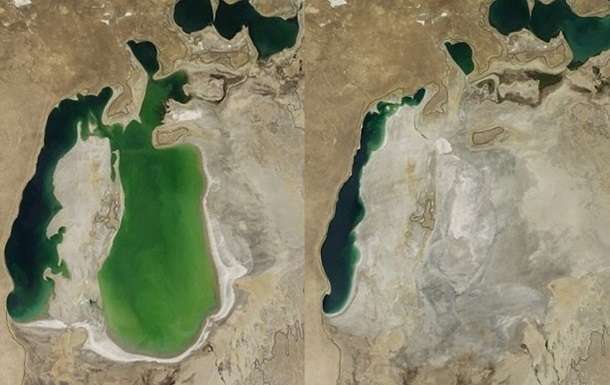Fast Fashion: Cheap, trendy and environmentally damaging
/The value of the global fashion industry is said to be 3,000 billion dollars, or 2 percent of the world’s Gross Domestic Product (Fashion United). There has been increasing coverage on the appalling and unsafe conditions garment factory employees work at for only a minimum wage below $3 US Dollars. Going back a few years some might remember the 2013 Savar building collapse where a structural failure accident lead to 1,134 deaths, with the several garment factories inside the building manufacturing apparel for brands such as Monsoon, Mango, Primark and Walmart.
But not enough light has been shed on the aftermath of fast fashion. Fast fashion is defined as designs that move from the catwalk quickly to clothing stores to capture current fashion trends. Household names such as Zara, Primark, H&M, ASOS, Boohoo and Topshop are all considered to come under this term. With an ever-growing population comes an increased demand for apparel, more specifically ‘fashionable’ apparel, many believe that it is in fact the actual fast fashion brands themselves that have conditioned us to become materialistic machines. It can be agreed that wardrobes in developed economies are saturated so to be able to sell more products, fashion retailers must entice shoppers with constant newness and affordability to convince them the items they already have are no longer fashionable and they need more.
Moreover, the use of social media has fed social influence in the discovery of the latest trends particularly for millennial’s. Fast fashion giants such as Boohoo and Missguided have cut costs down to the minimum through not having stores, allowing them to push business models, such as “test and repeat”, that involves making small quantities of around 300 pieces of clothing at a high variety and then rapidly increasing production of the third or so that have sold the best.
Making such a huge step in the development of supply chain models and sales of the fashion industry is truly something to be impressed about, but not so much when it is costing the environment unrecoverable damage.
Fast fashion is now the second environmentally damaging industry in the world, next to oil, and this stems from the very beginning of an outfits journey. The global fashion industry is generating masses of greenhouse gasses due to the energy needed to produce, manufacture and transport the millions of garments that are produced every year. The most popular fabrics are synthetic (nylon, viscose, polyester) as they’re cheaper to produce and more durable, however they are fabricated from fossil fuels such as petroleum or coal which are two of the dirtiest types of energy source in terms of carbon emissions.
The majority of cotton grown worldwide is now genetically modified making it resistant to pests that would hinder its quality and yield but just as there are super bugs resistant to antibiotics there are strains of pests that are resistant to the typical pesticide- they need to be treated with stronger pesticides that are toxic to humans and animals. Some possible side effects of pesticides that present a high risk for cotton farmers include infertility and sterility, respiratory disorders, skin irritation and cancer.
Abandoned barrel full of toxic chemicals from textile production. (Image Source: Getty/istock)
A lot of garment factories around the world are situated in developing economies where the largely unregulated textile industry can thrive, again at the cost of its surroundings. Toxic chemicals that are used in dyeing and fabric finishing processes end up directly as waste in rivers, textile dyeing is the second largest polluter of clean water globally, after agriculture (Independent). The waste dumped in rivers is extremely harmful to people living in the surrounding river banks as well as aquatic life, moreover the contamination can spread so far it reaches the sea and around the globe.
Cloth being dyed in Lijiang, Yunnan Province, China. (Image Source: Keren Su/Corbis)
Some of the harmful remnants can still be found on clothes long after the production process, Greenpeace pressed for its Detox campaign after it found the traces of hazardous chemicals on several brands’ products. Not only is waste dumped into surrounding water sources but tremendous amounts of water are needed to produce clothing items, approximately 7,000 litres of water are needed to produce one pair of jeans (The True Cost). In a 2014 announcement by NASA, satellite images revealed that the Aral Sea which was once the world’s fourth largest lake, has almost completely dried up due to the lake being used to grow 1.47m hectares of conventional cotton (not to be confused with organic cotton, its sustainable sibling). The sea used to be home to 24 species of fish and even though the lake was salt water, the rivers that fed it were of fresh water. Another consequence of the sea drying up is an increase in the number of dust and salt storms, these also come with a shift in the climate change of the immediate area as the Aral Sea kept the climate in the region regulated by lessening strong Siberian winds in the winter and cooling the area in the months of summer.
Before and after of the Aral Sea, 2000 and 2009. (Image Source: NASA)
A study found that every time a synthetic garment is washed, around 1,900 individual microfibers are released into the water which then make their way into the oceans. These microfibers are ingested by small aquatic organisms such as krill and plankton, they accumulate while moving their way up the food chain and concentrate toxins in the bodies of larger animals which we consume. While countries are coming together to ban the use of micro beads in cosmetic and cleaning products, it’s said that microfibers have a more harmful effect on the environment and with 190,000 tons of textile micro plastic fibres ending up in our oceans every year it’s time we try and become more conscious.
What can you do/be done about it?
Don’t give in to the mesmerising powers of fast-fashion and constant online sales! To mass produce very high numbers of garments, fast-fashion conglomerates cut corners on quality meaning items won’t last you as long as you would like – further adding to fashion pollution. As previously mentioned, a lot of garment manufacturing companies are based in developing nations where regulations are lax, so where possible choosing clothes which are made in countries with more rigid environmental regulations for factories like Europe, Canada and the US can ensure we’re a step closer to making sure their apparel is not affecting the environment.
Furthermore, choosing organic and natural fibres e.g. linen, hemp and bamboo means clothing pieces can biodegrade instead of taking 20-200 years to decompose so less fashion waste ends up in landfills. Several brands have already taken it upon themselves to make changes, an outdoor wear and gear company has been creating recycled polyester from plastic soda bottles from 1993 in the attempt to make a step forward towards a more sustainable system - using fabrics recycled from plastic decreases our dependence on petroleum. Another company, a renowned denim manufacturer, has also started using recycled bottles to make garments- since Spring 2013 they have utilised 11.9 million recycled bottles towards a collection of apparel that are made of 20 percent post-consumer waste.




